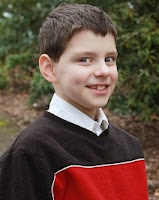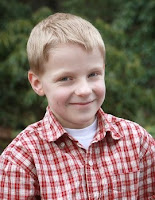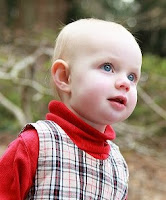A friend commented on the last post about what was said on the shirt. My response became kind of lengthy, and I don't know if you find languages fascinating like I do, but just in case, here's my response to the question:
The top of the shirt says, literally: "Morumon herupingu hanzu" (Mormon Helping Hands). The bottom is "Matsu Jitsu Seito Iesu Kirisuto Kyoukai"--The Church of Jesus Christ of Latter-day Saints.
Japanese has three writing styles. The top writing is written in katakana. It's used for words adopted from other languages. That's why it's so easily understood once you know what the characters say--they're all syllabic. It's kind of like a secret code.
 |
| The katakana "alphabet" |
Hiragana is the same way as far as being syllabic goes, but it's not quite as pointy as katakana. It's used for Japanese words and is much more easily read than the Chinese kanji characters. There aren't any hiragana characters found on this shirt.
 |
| The hiragana "alphabet" |
 |
| A few words in Japanese kanji |
I don't know much, so there's probably someone out there who knows a lot more than I do about this kind of stuff, but there you go, a basic lesson on Japanese.

























7 comments:
That's cool. I'm interested in this stuff as well. For the most part, the kanji characters you listed have the same meaning (although surely different pronunciations) in Chinese as what's shown, although 'to eat' looks like it has some kana in it too. So does 'to go'. It also looks like they're using the simplified characters.
Does Japanese pronounce individual kanji characters as multiple syllables? In Mandarin, they're almost always one syllable per character.
For comparison, the Mandarin for the church name would be "Yesu Jidu houqi shengtu jiaohui" (literally, Jesus Christ latter-day saints church).
And interestingly (to me anyway), Chinese does have a 36-letter phonetic alphabet, with very efficient and consistent spelling rules. But they never use it except to teach children and foreigners the "real" characters (like linguistic training wheels).
Those characters are: ㄅ (b), ㄆ (p), ㄇ (m), ㄈ (f), ㄉ (d), ㄊ (t), ㄋ (n), ㄌ (l), ㄍ (hard g), ㄎ (k), ㄏ (h), ㄐ (j), ㄑ (q), ㄒ (x), ㄓ (zh), ㄔ (ch), ㄕ (sh), ㄖ (r), ㄗ (z), ㄘ (c), ㄙ (s), ㄧ (i/y), ㄨ (u/w), ㄩ (ü), ㄚ (a),ㄛ (o), ㄜ (e). ㄝ (ê), ㄞ (ai), ㄟ (ei), ㄠ (ao), ㄡ (ou), ㄢ (an), ㄣ (en), ㄤ (ang), ㄥ (eng), ㄦ (er).
I really don't know much about kanji at all. I know some very simple characters, that's it. The symbol for river is pronounce "kawa," so that's two sounds, so I'm thinking yes, some have more than one syllable attached to them.
Oh, and yes, there is some hiragana attached to some verbs to give them the proper meaning--they can be conjugated.
I love the name of the church. That's AWESOME! In Japanese, it's Latter-day Saints Jesus Christ Church.
Just like Mandarin, the hiragana letters are used for teaching children but are frequently used in everyday language. In regular writing, though, it seems that kanji shows up in nearly every sentence.
The Book of Mormon or Morumon sho, though written in kanji and hiragana, has hiragana characters written in small print next to the kanji, so even a small child can read it.
The symmetry of some of these is kind of cool, too. The name of Tokyo in Chinese Characters (the same as in kanji, I believe), "東京", in Mandarin is Dongjing, or "East Capital", while Beijing (北京) means "North Capital".
Not as major of a town, but there's also a Nanjing (South Capital) and Xijing (West Capital). Interesting that the naming convention carries across national borders like that.
In case it's interesting, the Mandarin for the Japanese words on your chart are:
日本 r ben (sun+beginning/originall... "land of the rising sun" maybe?)
山 shan
川 chuan
日 r
雨 yu
水 shui
火 huo
田 tian
米 mi
魚 yu
寿司 shou si
肉 rou
酒 jiu
茶 cha
車 che
電気 dian qi (although I'm more accustomed to seeing "electricity" written as 電力 dian li or literally "electric power")
Counting: 一 yi
二 er
三 san
四 si
五 wu
六 liu
七 qi
男 nan
女 nu
大 da
小 xiao
多 duo
少 shao
and... this is hard enough to type in a blog comment :) so I'll stop there. I'm curious how they're pronounced in Japanese?
(You mentioned also the Book of Mormon title, in Mandarin it's Moermen jing; "jing" is the suffix for sacred or special volumes like the Dao de Jing (Tao Te Ching is another spelling) or the Yi jing (I Ching))
Hope this isn't all boring but I think Asian languages are pretty cool.
(And sorry, I didn't go to the trouble of typing all the tone marks in the above, blog comment, etc.)
So, here's the deal, from what I understand. If left by themselves, each of these characters has a name, but in some cases, when placed with another character, the name changes. At least, that's what I observe. I really know very little about kanji. We were able to get by with a few simple ones but hiragana was much simpler to use. So, here's my attempt, but I've probably gotten quite a few of them wrong.
日本 Nihon (sun + book)
山 yama (mountain)
川 kawa (river)
日 nichi or jitsu (day or sun)
雨 ame (rain)
水 mizu (water)
火 hi (fire)
田 den, ta or da (rice paddy)
米 kome (rice)
魚 gyo (fish)
寿司 - I don't know this one.
肉 niku (meat)
酒 sake (liquor)
茶 cha (tea)
車 kuruma (vehicle or wheel)
電気 denki (electricity)
Counting:
一 ichi (one)
二 ni (two)
三 san (three)
四 shi or yon (four--has two names because "shi" also means death)
五 go (five)
六 roku (six)
七 shichi or nana (seven)
男 otoko but dan or nan when combined with another kanji (male)
女 onna but jo or nyo when combined with another kanji (female)
大 oukii, dai or tai (big)
小 chiisai (small)
多 oi (many)
少 sukoshi (few)
We got by without precious little literacy with the characters too, I'm really just playing with the basics myself. But I find it a fascinating system.
So... if 5 is "go", then essentially when people play Go games, that's just the "game of 5 (in a row)"? Pretty straightforward.
四 (si) has the connotation of "death" in Mandarin too, but there's no alternate name (the number two, however, has two names depending on what you're doing with it).
Does Japanese have a part of speech which you have to insert between quantities and the noun they're measuring? Chinese does (measure words or quantifiers), which was a totally new concept for me as an English speaker.
I have to admit, though, having a plural form of "you" is really handy. I wish we had one of those.
Yes. There are counters for things depending on what you're counting. For example, five people is go-nin.
Found this site. It has a lot of them listed: http://japanese.about.com/od/Grammar/a/Counters.htm
Thanks, I'll check it out. I would believe that the various Asian languages developed similar traits through the close association of their peoples just like language families elsewhere did (of course), but it's still interesting to see the same kinds of things that made Chinese so fascinating to learn show up in other places too.
Just be glad you don't have tones to deal with :)
Post a Comment